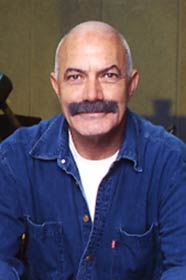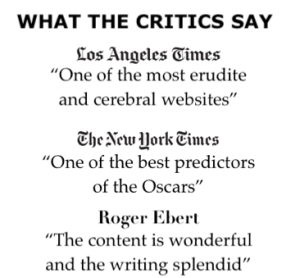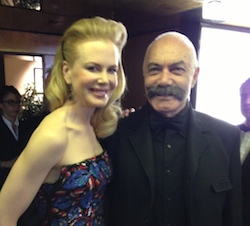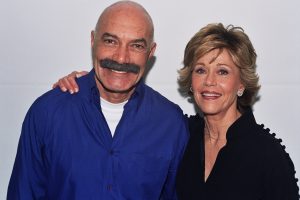
Sam Esmail’s sci-fi feature adaptation makes a few diversions from the book, particularly in regard to the ending. But according to Alam, who also serves as an executive producer on the film, these changes were “emotionally faithful to the book.”
Leave the World Behind follows Amanda and Clay Sandford, played by Oscar winner Julia Roberts and Ethan Hawke, who bring their children Rose and Archie (Farrah Mackenzie and Charlie Evans) on a beach getaway.
Two-time Oscar winner Mahershala Ali plays G.H. Scott, the owner of the luxurious home the Sandfords are renting, who comes home with his daughter Ruth (Myha’la) to escape mysterious chaos occurring in the city.
The two families are then forced to exist — and survive — under the same roof as increasingly strange and apocalyptic events occur, including plane crashes, herds of deer filing into the backyard and Archie’s teeth mysteriously falling out.
But that’s just his theory. Neither the film, nor the source material, give a definitive answer. As Amanda and Ruth search in the backyard for Rose, who has gone missing, they stop in their tracks when they see explosions coming from the city. The movie ends with Rose finding the neighbor’s bunker and — more importantly — a DVD containing the final season of “Friends.” As she puts on the series finale, the Rembrandts’ theme song, “I’ll Be There For You,” plays over the movie’s end credits. In the book, Rose leaves the neighbor’s house, gathering supplies from there to bring to back to the families.
Alam discusses the power of uncertainty, the accuracy of G.H.’s explanation and the reason for not offering definitive conclusion.
To end with the particular jolt of humor that [Sam] does is so satisfying and so rewarding. It’s sort of self-reflective because he’s a filmmaker. He’s also worked in television, and he’s sort of asserting something about the power of that medium, and its hold over this one character. I say it’s funny, but I don’t think it’s a joke. I don’t think it’s a joke on Rose. I don’t think it’s a joke on the audience. I don’t think it’s a joke on “Friends.” It’s a reminder that art is kind of a salve. The theatrical experience of watching this movie is so powerful because I’ve had the chance to see audiences respond to the ending three times now, and nobody really knows what to make of it. They’re like, is this funny? Is this scary? Is it really over? And I love that so much.
clock, and we hear the timer alarm go off. That’s the last moment we’re with Ruth and Amanda. And the last thing that G.H. has said is we’ve got to go to that bunker. You as a viewer may say, “Oh, they’re not going to make it.” But I have this vision of G.H. as so competent, and I feel like he’s solved every problem. But I don’t know what’s going to happen to Archie. The truth is that I don’t know. This is something I’ve heard Sam say a lot, that he also doesn’t know. But this is open enough that it becomes something that is possessed by its audience. I’m not withholding a definitive answer because I’m not in possession of that.
G.H. gives detailed explanation for what is happening
I didn’t, but Mahershala Ali is such a good actor you sort of believe it. That was such a fundamental part of the writing process for me, is that I also don’t know. My first editor on this book said to me, “I understand that it’s imperative that you dance around what’s really happening.” And then she mentioned aliens, and I was like, “Aliens? Really, that’s where your head went?” But I also find that so pleasurable because I don’t get to control what people are thinking, and readers come to something with their own frame of reference.
G.H. is saying these things based on what he knows and what his experience of life has been. And had one of the other characters been given an opportunity to speculate, they would say something probably different and informed by what their experience of life had been or what they thought. In a strange way, what’s happening among these people becomes an analog to what’s happening as you and I are talking. This is how you talk about art, you try to puzzle it out.
He’s describing this scenario of attack, which will induce uncertainty in the population. In a way, what he’s afraid of is exactly what he’s experiencing. It’s just uncertainty. You as the viewer have to fill in the blanks of what that uncertainty looks like, whether it’s a cyber attack, whether it’s an act of war, whether it’s environmental disaster, whether it’s just a collapse of civic order. That’s what’s so scary about it is that you just don’t know.
Why not give the audience clear closure?
Wouldn’t that be so dissatisfying? It’s a film that respects you as a viewer enough to not provide that. In that final scene between Julia and Myha’la, they don’t embrace. Even prior to that, when they’re in that little shed and come to a détente, Ruth acknowledges that there’s some truth to the things that Amanda has said, that they’re in agreement about something, but it doesn’t end with a hug. It’s not that kind of story. I have no problem with like a big disaster movie that saves the six or eight principals and reunites them in the aftermath of a disaster and allows you to be like, “Well, everything’s gonna be okay.” I just don’t think this is that kind of film.










